Peter Fischli David Weiss
Die Verschwörung (The Conspiracy) aus Stiller Nachmittag (Quiet Afternoon), 1984 – 1985
Super Dakota is proud to present for the fourth edition of Super Stories, Die Verschwörung (The Conspiracy) aus Stiller Nachmittag (Quiet Afternoon), 1984 – 1985, a photograph by Swiss duo Peter Fischli David Weiss from their infamous series of Equilibres.
The Equilibres photographs (1984–1987) are composed with images of household objects and studio detritus arranged to form tenuously-balanced assemblages, replete with wit and discovery, presenting everyday materials in absurd and humorous environments. Like so much of Fischli and Weiss’s work, the concept behind this body of work emerges from the artists trying to find a form that could accurately convey the content of their various discussions and activities together.
Peter Fischli David Weiss
Die Verschwörung (The Conspiracy) aus Stiller Nachmittag (Quiet Afternoon), 1984-1985
Black and white photography
Gelatine silver print
Image: 20 x 29,5 cm
Frame: 36 x 45,5 cm
Edition 1 of 3
In the catalogue from their exhibition How To Work Better at the Guggenheim in New York, 2016, Jan Slaby introduces the context of this work as a conversation about boredom: about its capacity as an existential orientation to alter temporality of human experience – how when nothing is happening, time seems to stand still – and about how attuning one’s own boredom might be the ultimate precondition of metaphysical philosophising. The artists were drawn to the idea that by intentionally placing oneself in the state of abandon, creating this emptiness of one’s own making, one awakens a readiness for experiences and a latent creative energy that may otherwise pass unnoticed. (1)
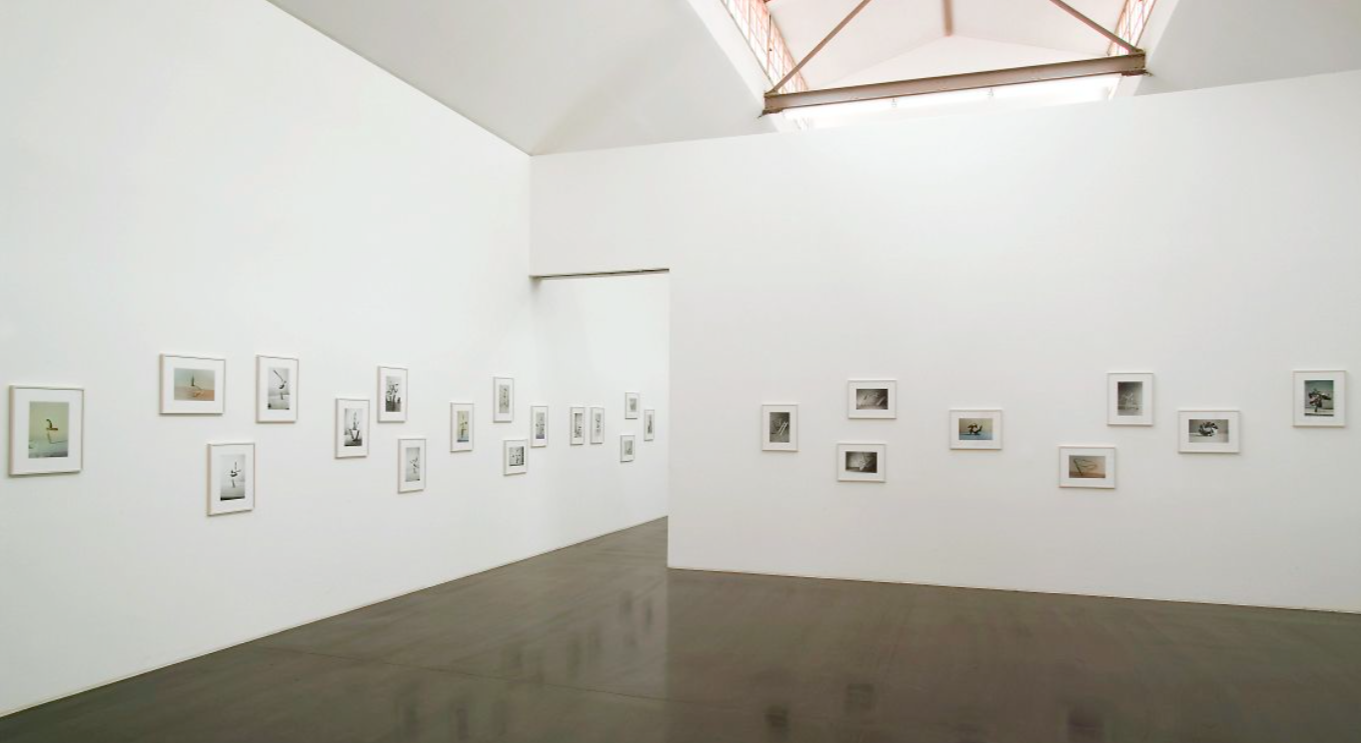

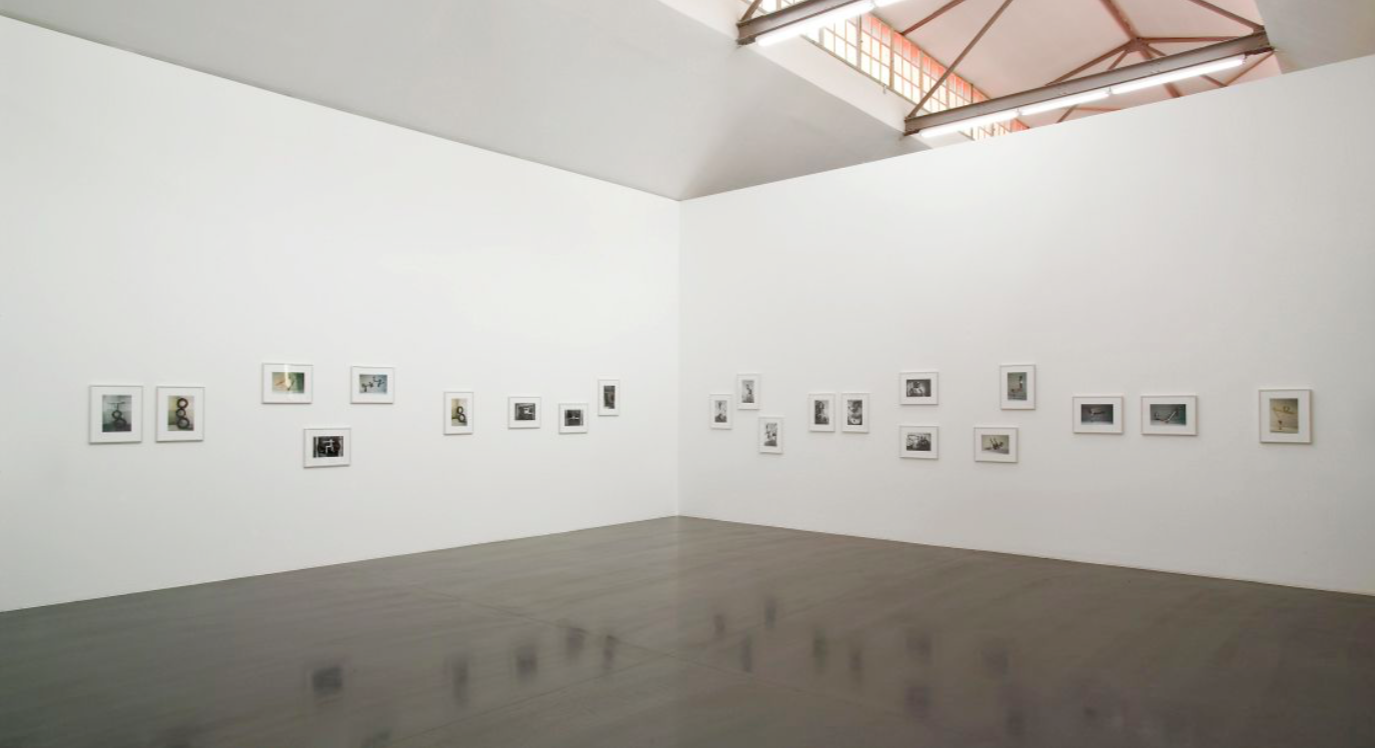
Installation view, Peter Fischli David Weiss, Equilibres, 2007, Sprüth Magers, Munich
The assemblage of photographs has developed into the artists’ celebrated film The Way Things Go (Der Lauf Der Dinge), 1986–1987. The film enlists an assortment of objects, including tyres and chairs, as components in a domino-like chain reaction lasting thirty minutes. Using such common industrial objects, Fischli Weiss created a continuous chain of actions and reactions involving balloons deflating, tires rolling, liquids draining, candles melting, balls dropping, fuses burning, wheels spinning, and much more. The film’s humour lies in the deliberate misuse of these objects, as they are co-opted into performing roles outside their normal function. Reminiscent of the physical comedy of silent films starring Charlie Chaplin or Buster Keaton, here the actors are steaming-kettles mounted on roller-skates, rotating dustbin bags, rickety stepladders set in motion, buckets, tyres, bottles and planks. (2)
Peter Fischli David Weiss, The Way Things Go, 1986-1987
One evening in their studio, seeking ways to embrace the deliberate misuse of time while waiting for deliveries to arrive, Fischli and Weiss decided to explore this concept of boredom in their pursuit of a new project. Following a proposition outlined in a book A Thousand Games You Can Make Out of Nothing that was lying around the studio, the artists began arranging tools and other found objects into complex, counter-balanced configurations that defied gravity, even if just long enough to snap a picture during the moment before they collapsed. (3)
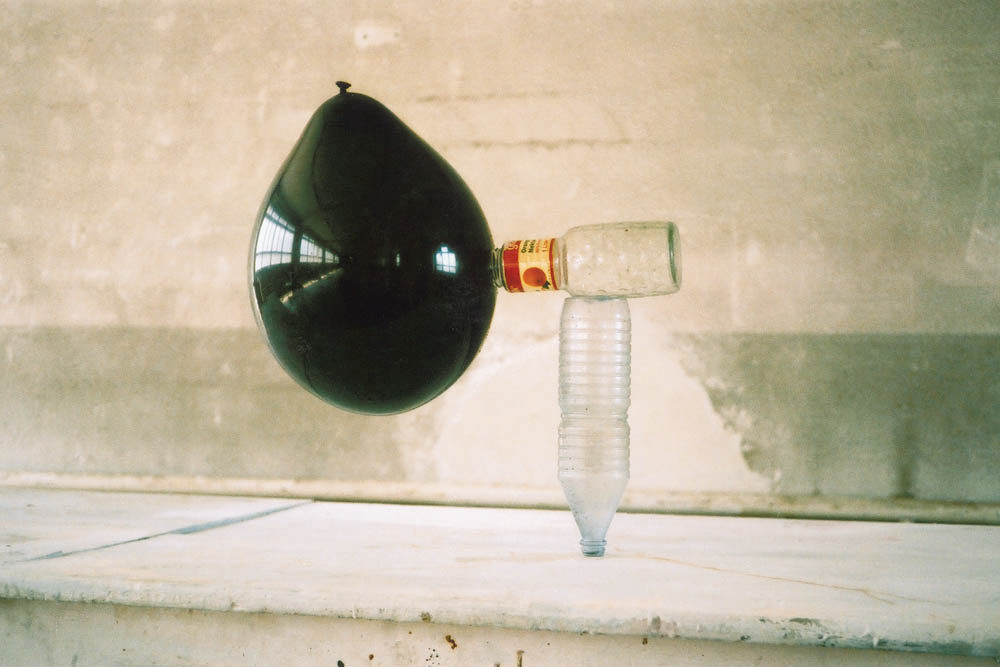
Peter Fischli David Weiss, Artificial Intelligence, 1984, Matthew Marks Gallery
“As an artist, if you are always just receptive to the things with which the world entertains you and make your work in response to them… that's not so interesting. The moment when you are disconnected and go into this deep boredom… this is really a great experience. And then you go from there… to celebrate boredom was also to go against the whole idea of the “inspired artist"."
-Peter Fischli
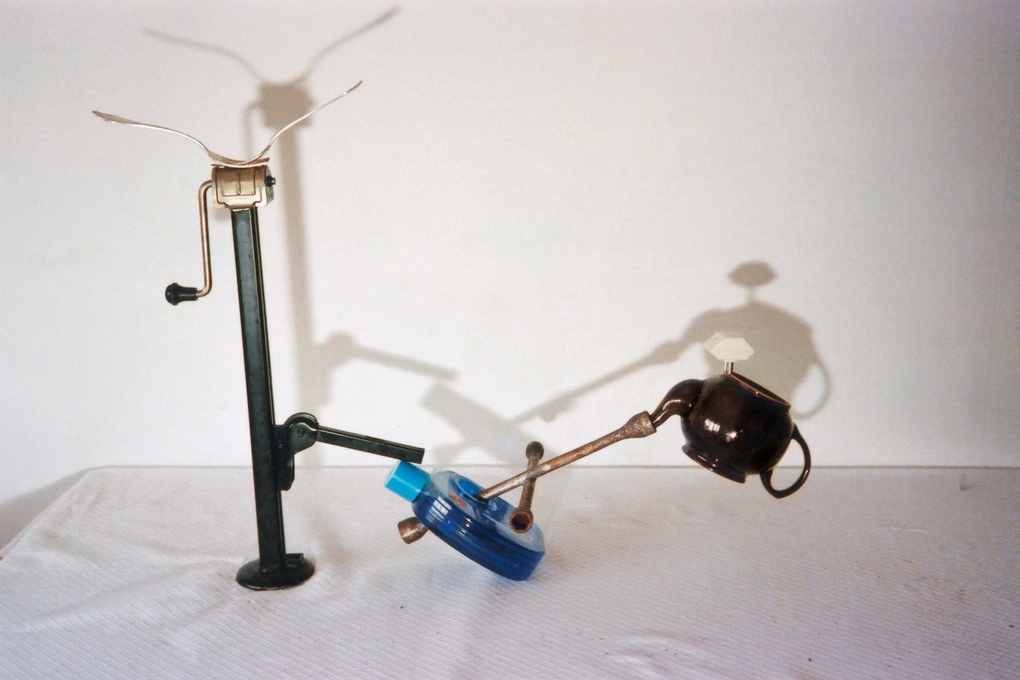
Peter Fischli David Weiss, Die Erziehung, 1984
Enjoying the process, and satisfied with the manifestation of their intent, the artists continued making such delicate constructions, not only in their studio but in their homes or those of friends, in a kitchen, a restaurant, and an empty factory building, out of things they found on site – kitchen utensils, vegetables, tires, chairs, champagne bottles, shoes – and photographing them, with an automatic camera, creating an image of their brief existence. (4)
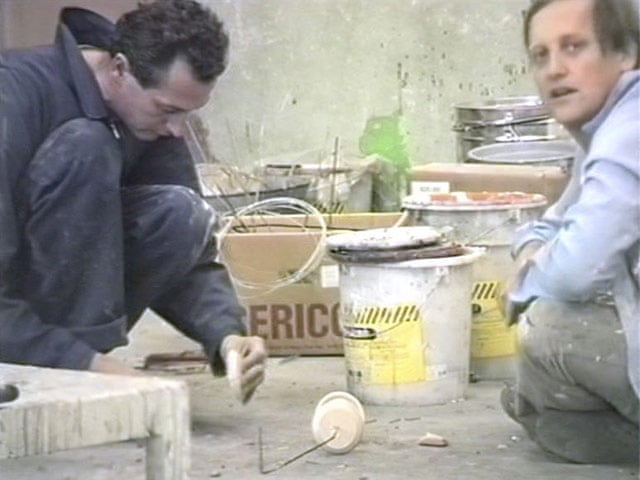
Peter Fischli David Weiss in a still from Making Things Go, 1985
Working in an unpremeditated way and replying upon the elements of chance opened the work up to the unexpected, which the artists found more interesting than the things conceived in advance. The precarious constructions solved the eternal artistic problem of how to arrange elements in space: surrendering decisions of form to stasis and the found object, here “the composition is right when it stands”. David Weiss notes that when they started to work on the compositions one day they realised that you don’t need to create one – the composition creates itself because of the nature of the objects used and the way they must fit together in order to create an equilibrium. (5)
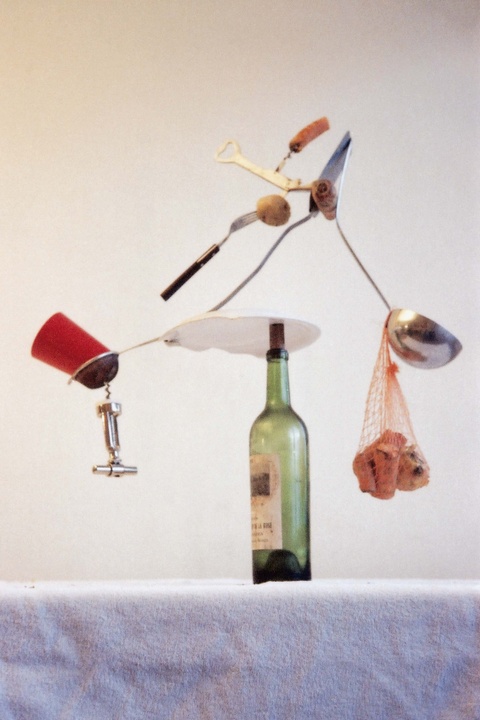
Peter Fischli David Weiss, Ein neuer Tag beginnt, 1984
The resulting images, too, were particularly satisfying as a register of the atmosphere and environments in which they were made, the common objects and situations reflecting the peculiarities of the artists’ own existence. They shot a number of images for each configuration. The first priority of the photography was always simple documentation, but sometimes the light came out especially right or the photo carried some aesthetic beauty. When such lucky accidents occurred, and as the images began to accumulate, they realized this could become a work. As Patrick Frey has noted, in the Equilibres, the “end result shows the paradoxical reconciliation of two laws of building (and thinking): Form follows function comes together with anything goes.” (6)
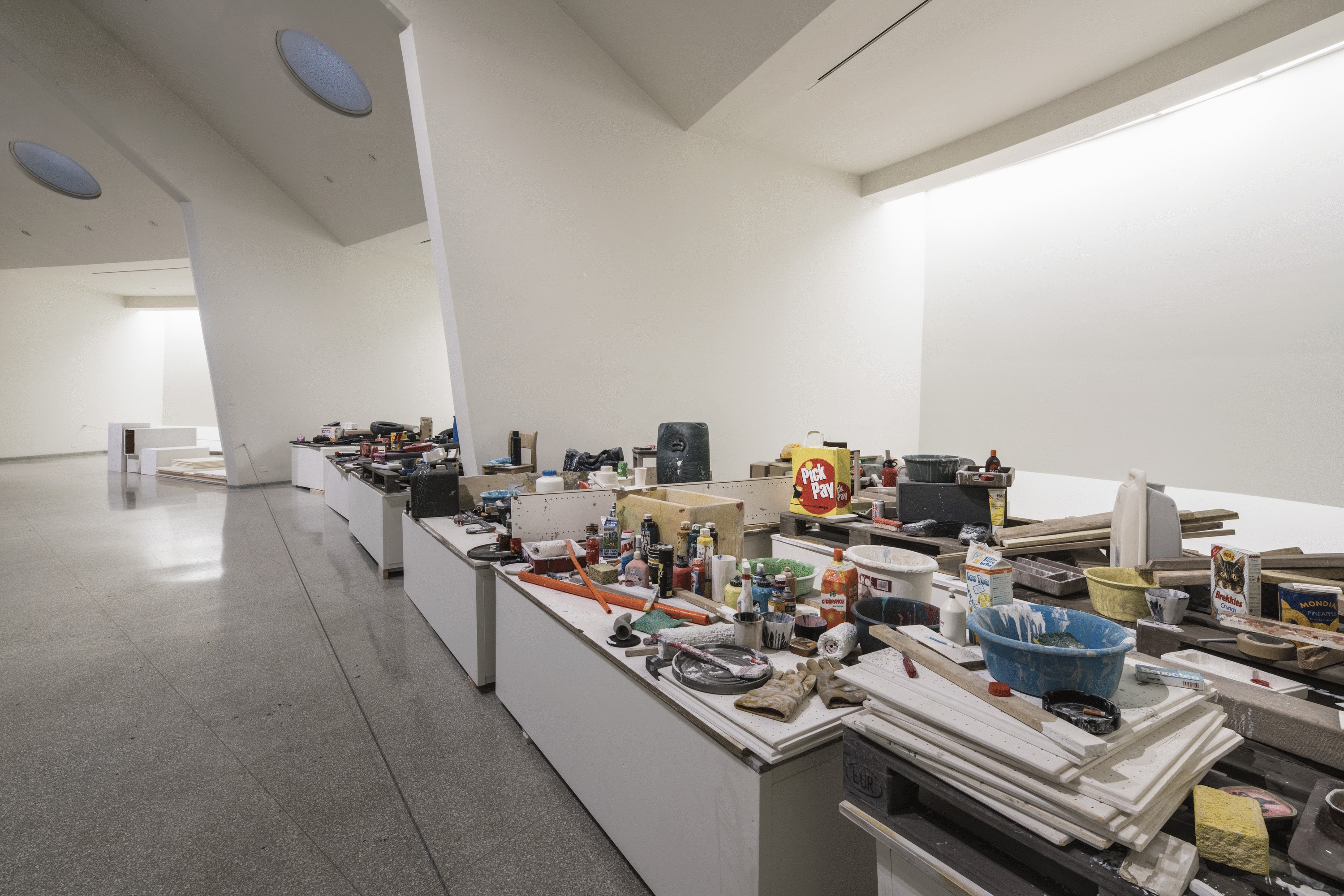
Installation view, Peter Fischli David Weiss, How to Work Better, Guggenheim Museum, New York, 2016
Conceiving of the artists’ books, Fischli and Weiss gathered their photographs together and glued them to papers, which they shuffled and rearranged to their liking and upon which they scribbled notes about possible titles for each work and for the series. Of the two titles tested for the group, they settled on the name Equilibres for the series of artworks. Stiller Nachmittag, or Quiet Afternoon – a title that is also a name of one of the individual Equilibres photos composed of a cheese grater, a carrot, and a zucchini – came to serve as the name for the early artists’ books compiled from this series. (7)
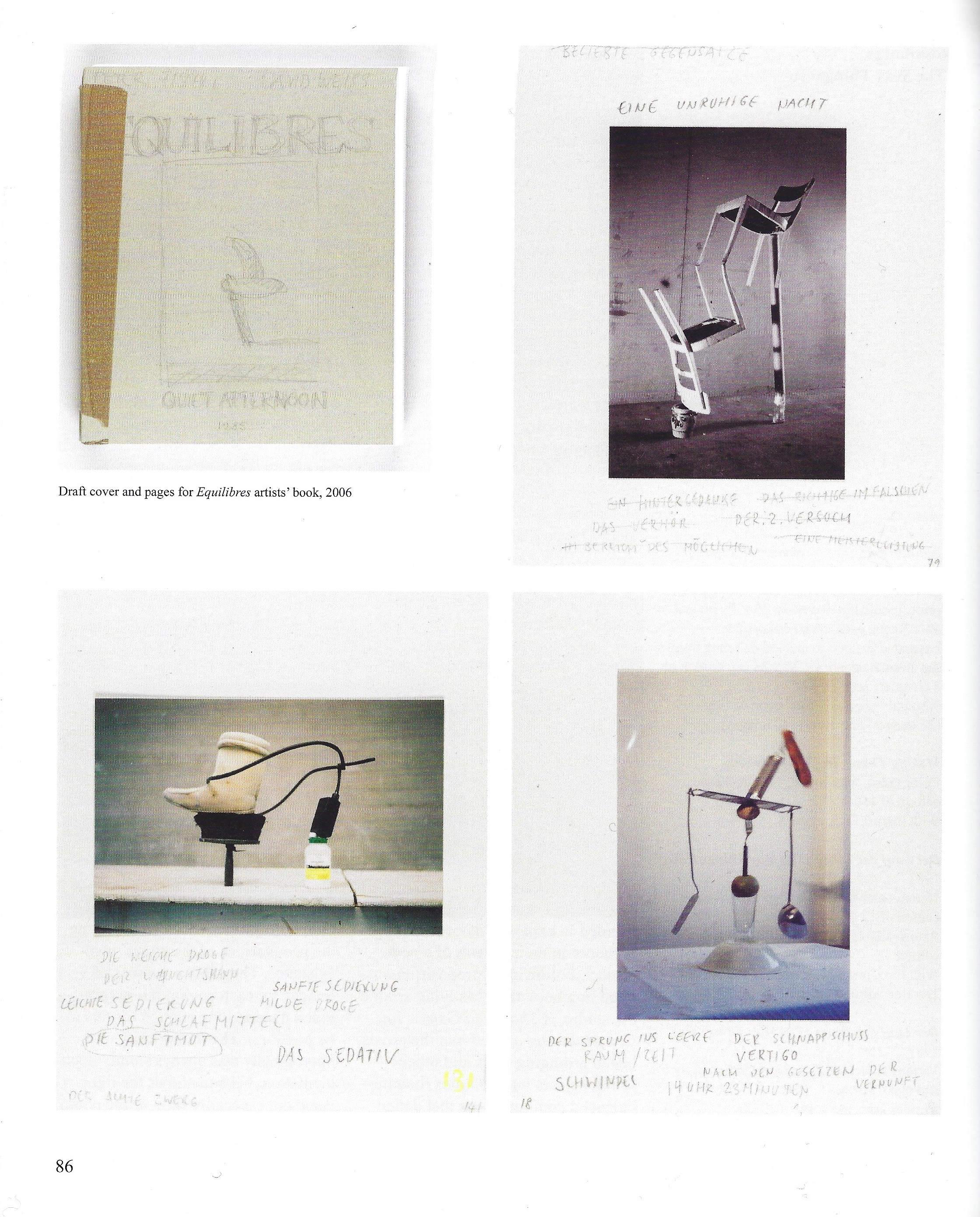
Draft cover and pages for Equilibres artists' book, 2006
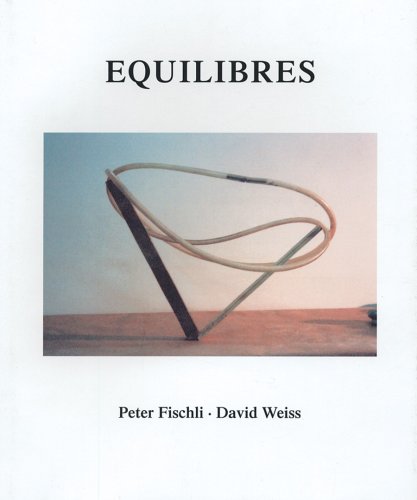
Whereas the title Equilibres points out to the formal complexities of the objects at equilibrium in the photographs, Quiet Afternoon reflects a conscious effort to conjure the idea of an artist whiling away time in the wilfully inconsequential activity of creating this work; as Weiss explained, “In this way, the work is more about the story of creating the Equilibres.” The work took far longer than a single day to complete, and with the difficulty of balancing the objects, and the artists’ intent to publish and exhibit the photos, “the moment of the truly quiet afternoon was actually precluded. Likewise with aimlessness – the aimless and our procedure contradict each other in practice.” To the artists, the constructions instead served “to bridge or, at best, sweeten time…You could say that these temporary arrangements are souvenirs of this afternoon and also small justifications.” (8)
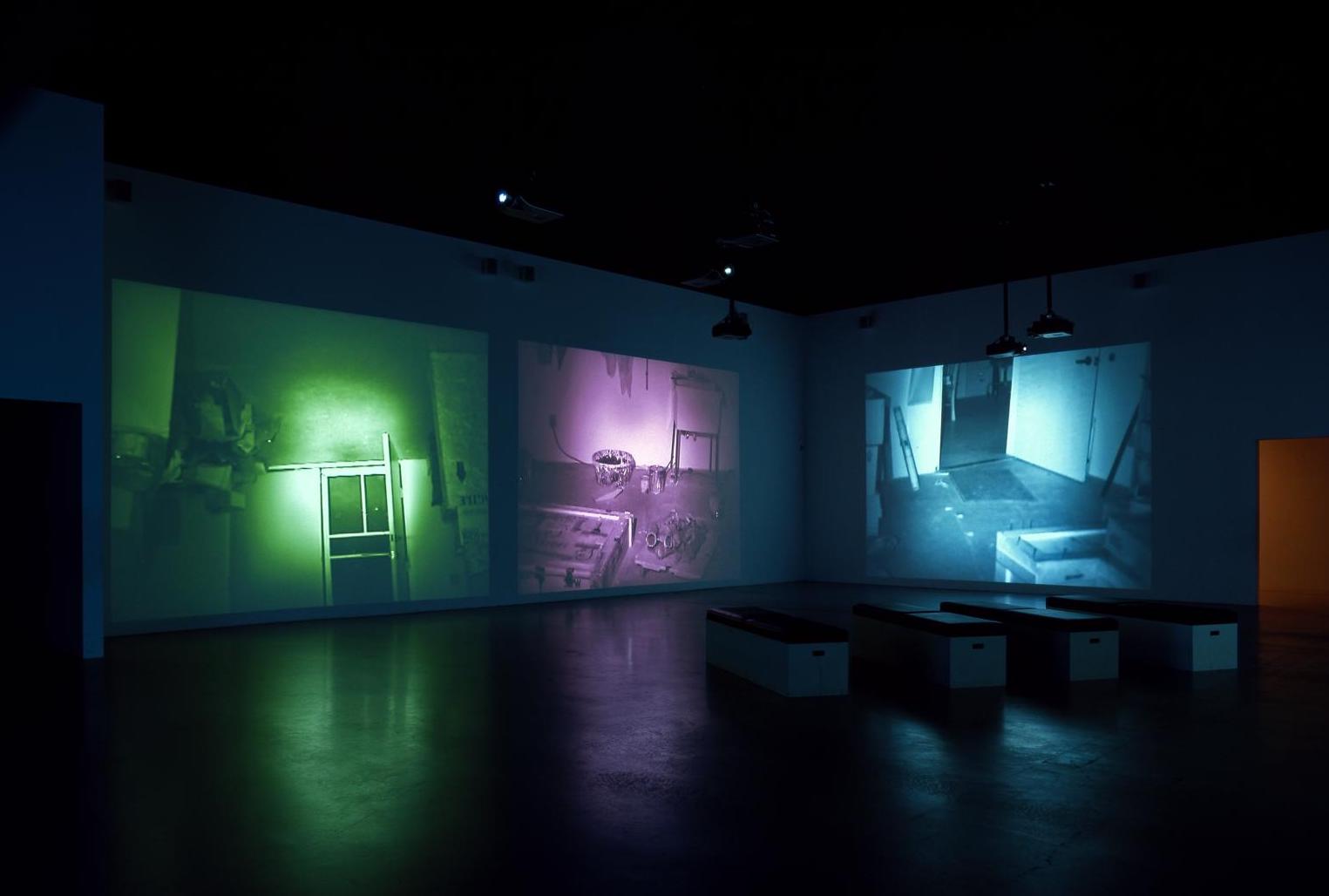
Bruce Nauman, Mapping The Studio II, 2001
“There is always this moment when you build something and it falls down. It’s a moment of fun and frustration at the same time. Like when a kid builds with blocks and then destroys the building—both parts are just as exciting. It’s that conflict of construction and deconstruction. At a certain point, we realized that these destructions were provocative, so we decided to make a chain reaction. Because when things fall from the table, they hit something else. And out of this, we make the first little movie. It was three minutes. We really did it to entertain ourselves, but we realized that the idea was too good. Or maybe not that it was too good, but that we wanted to keep going and make the chain reaction longer. Because when you find something you like to do, you should stay with it for a while."
-Peter Fischli, Interview Magazine, 2015
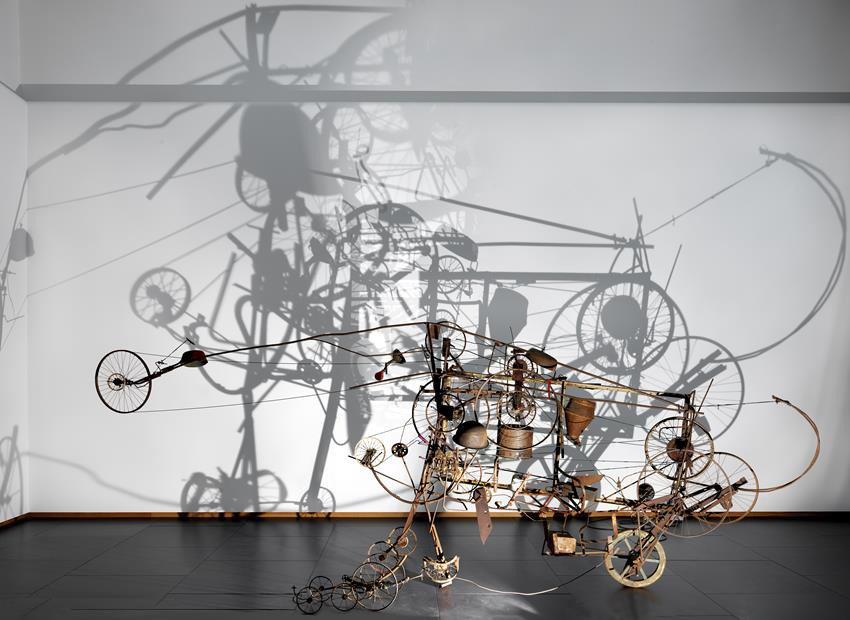
Jean Tinguely, Gismo, 1960, Stedelijk Museum, Amsterdam
In his interview with Wade Guyton, Peter Fischli explains that: “Although Equilibres were photographic images, and not sculptures to be shown in a gallery, you could still call them boredom sculptures. Something you can do in a restaurant or in a bar on the table—like trivial creativity, things people do while they are sitting around. It comes from that, and the fact that we were both fans of Anthony Caro’s sculptures and both of us came from a Bauhaus background. My father was an architect, and David was in art school in Zurich, which was still very much in the spirit of Bauhaus. So Equilibres is like this leftover of the modernist credo of “form follows function.” Because the composition works when the sculpture stands. Does it stand or does it fall? If it stands, then it succeeds. This is the form follows function idea completely. Totally modernist. Except for the fact that we are completely misusing objects. The hammer is no longer for hammering. The chair no longer works as a chair. It’s for making a sculpture. And in a sense we are liberating these objects. The chair is no longer a slave to this determination.”
You can read full conversation at INTERVIEW MAGAZINE
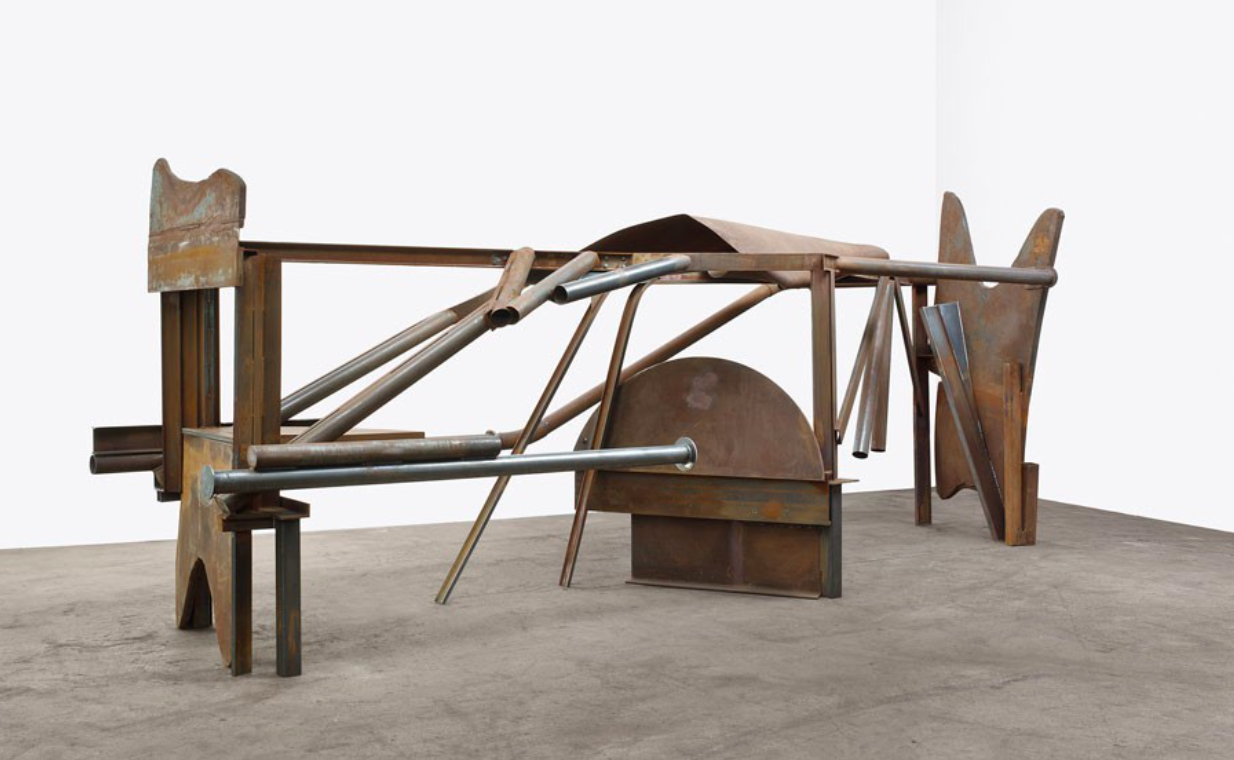
Anthony Caro, Wandering, 2012
Peter Fischli (b. 1952) and David Weiss (1946–2012) began their 33-year collaboration in 1979. Resisting any specific style, medium, or material, their work explores the poetics of banality—the sublimity of the objects and events constituting everyday life. Indebted to Dada, Surrealism, Pop Art, and Conceptual Art, their photographs, videos, slide projections, films, books, sculptures, and multimedia installations rely on keen observation and uncanny wit. Throughout the course of their partnership, Fischli and Weiss probed the idea of dualistic thinking. Perhaps because they were a team of two involved in constant dialogue and debate, they consistently interrogated Western culture’s reliance on contraries. In one way or another, everything they produced together playfully unravels what the artists understood to be “popular opposites”—labor versus leisure, fiction versus reality, kitsch versus beauty, and the banal versus the sublime. Through their sustained investigation into the everyday, Fischli and Weiss undid false dichotomies with the conviction that bewilderment might be a desirable state.
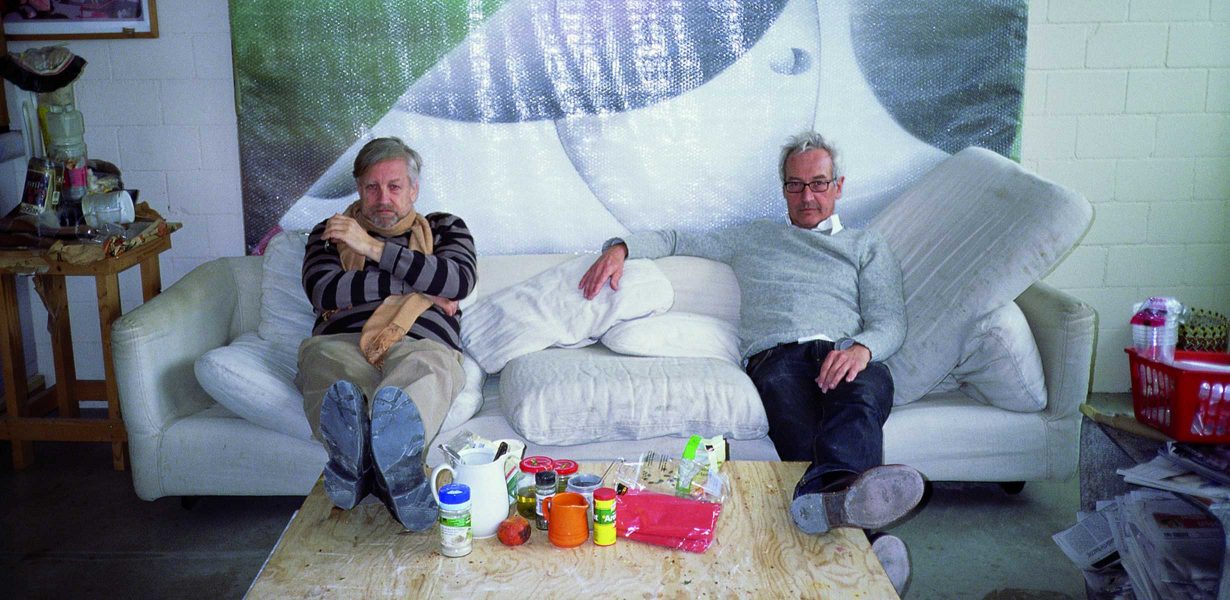
Peter Fischli & David Weiss. Photo by Walter Pfeiffer
Solo exhibitions of their work have been organized by Kunstmuseum Basel (1985); List Visual Arts Center, Massachusetts Institute of Technology, Cambridge (1987); Centre Georges Pompidou, Paris (1992); Walker Art Center, Minneapolis (1996); Museu d’art contemporani de Barcelona (2000); Museum Boijmans Van Beuningen, Rotterdam (2003–04); Tate Modern, London (2006–07); Museo Nacional Centro de Arte Reina Sofía, Madrid (2009); and Guggenheim Museum, New York (2016) among others. Their work has also been featured in numerous group exhibitions, including significant presentations at Documenta, Kassel, Germany (1987); Skulptur Projekte Münster (1987 and 1997); the Venice Biennale (1988, 1995, 2003, and 2013); the Carnegie International, Pittsburgh (1988 and 2008); the São Paulo Biennial (1989); and the Yokohama International Triennial (2008). In 2003 Fischli and Weiss received the Leone d’Oro at the 50th Venice Biennale, and in 2006 they were awarded the Roswitha Haftmann Prize.
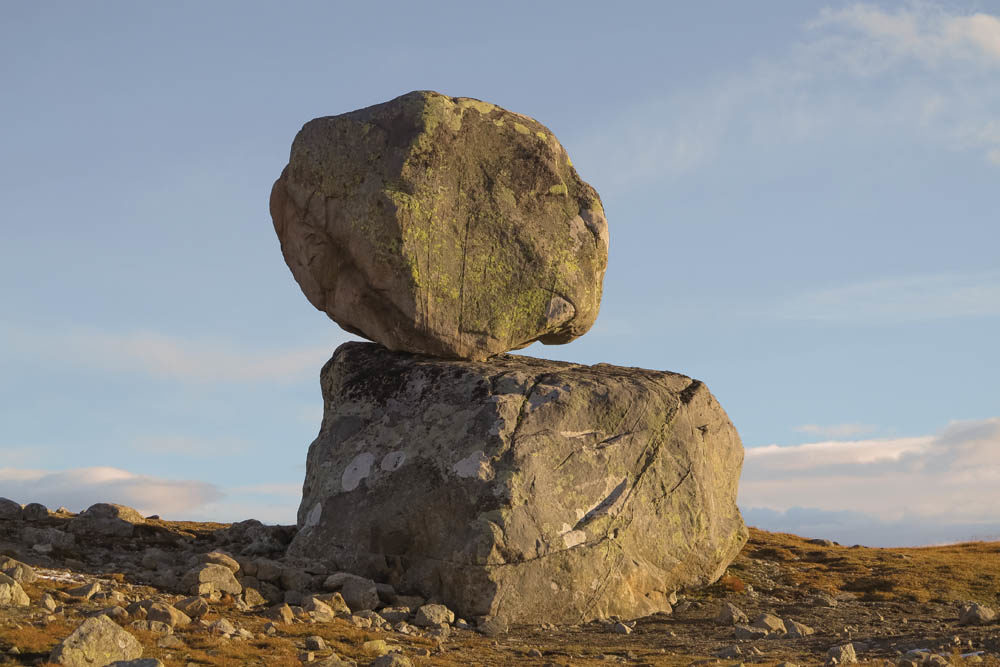
Peter Fischli David Weiss, Rock on top of another rock, 2012. Permanent installation, Valdresflya, Norway
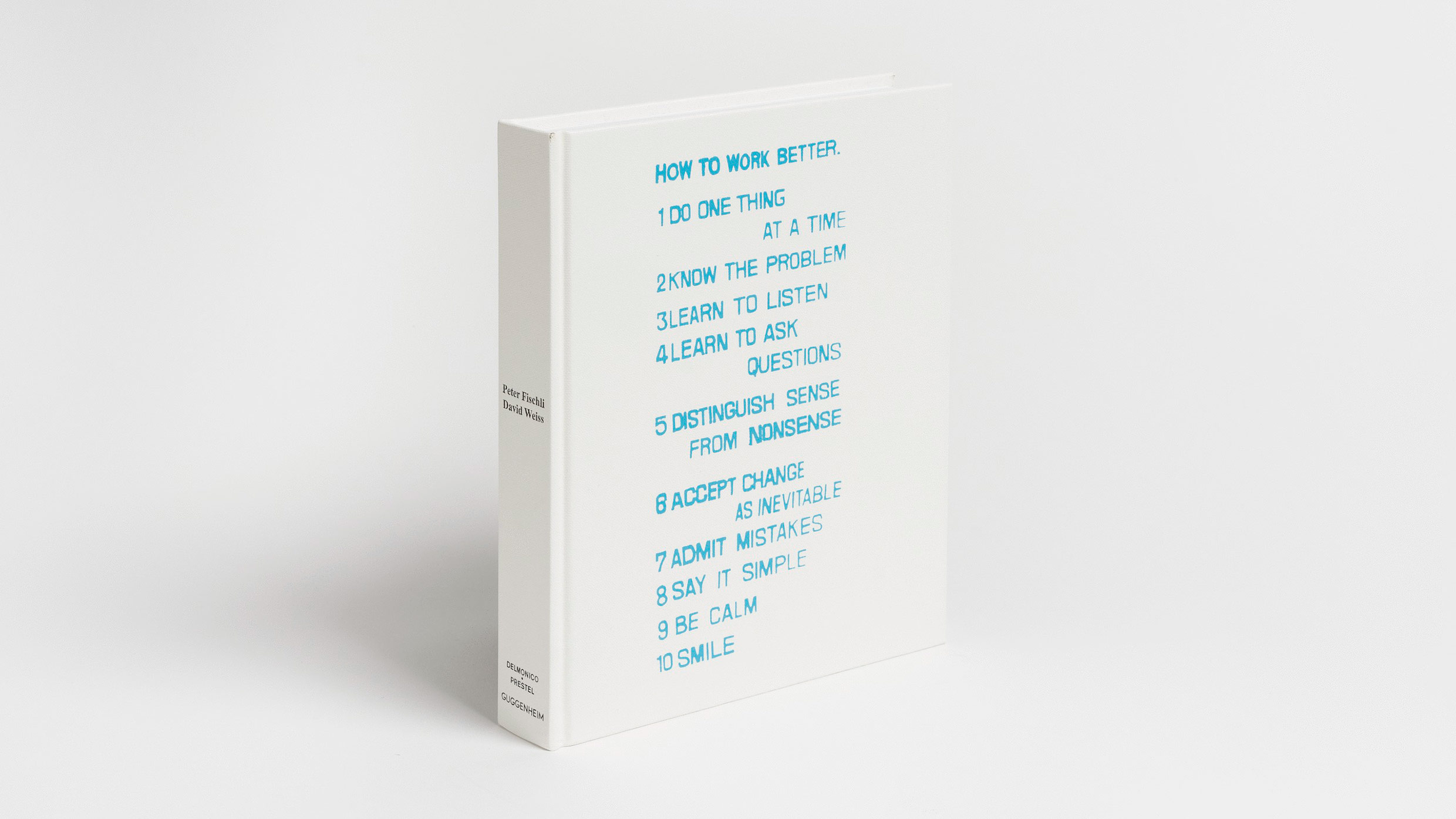
Peter Fischli David Weiss, How To Work Better, 2016
(1-8) from the publication Peter Fischli David Weiss, How to Work Better, Nancy Spector and Nat Trotman, Guggenheim Museum, New York, 2016
(2) The Pleasures of Misuse: An Interview with The Irreverent Swiss Artist Duo Fischli Weiss, Artspace, 2016
PRESS
FRIEZE | Artforum | New Yorker | New York Times | Artspace | The Guardian | Artnet news | Parkett | Flash Art | Vulture | Art in America | Artforum | Los Angeles Times | Flash Art
